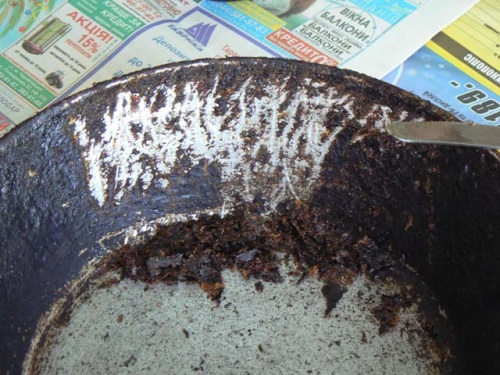A frying pan is a must in every kitchen; its place is of honor. Aluminum cookware is faster to cook due to thermal conductivity. They are convenient for preparing soup dressings or frying vegetables. Such frying pans are light, but soot does not bypass them, like any utensils, and over time it covers both the internal and external surfaces.
How to properly clean an aluminum frying pan
The specificity of cleaning an aluminum frying pan is that it is sensitive to mechanical influences and cannot be washed with a regular scraper. Such people are afraid of alkalis and acids - the usual detergents can ruin it - black spots may appear, the dishes will lose their shine.
The deposits that form on them are difficult to clean, taking into account the structure of the contamination. Nagar consists of:
- loose outer layer;
- hard and difficult to clean internal;
- You need to wash off the carbon deposits both inside and outside the frying pan; the latter is especially difficult to clean. But it’s not just that these dishes suffer from soot – there’s also old grease and burnt food.
How to clean carbon deposits
Soot is an unpleasant, and at the same time, widespread contamination; it is difficult, but possible, to wash it off. You can’t escape from soot; it always forms during the cooking process, and cleaning is mandatory. In addition to spoiling the aesthetic appearance of the frying pan, it will release substances harmful to health during the heating process.
Incandescent
So, you can clean the pan, but you need to be careful and attentive. It is not always possible to implement it at home. To implement the method, the following options are used:
- Blowtorch. Treat the frying pan with fire inside and out. In this case, the carbon deposits will literally peel off.
- Calcination on the stove. This will take a couple of hours. After this procedure, heated carbon deposits can be easily removed with a sponge or spatula. But this method is specific, since the process releases a pungent odor, which means that when doing this at home, it is important to ensure ventilation in the kitchen.
- The method for getting rid of carbon deposits inside a frying pan is to calcinate fine-grained sand. This will take 2-3 hours.
This way you can clean the pan if there is no coating applied to it.
Grandmother's method: liquid
To implement it, you need:
- boiling container. It must be at least 10 liters in volume in order to immerse the entire frying pan in it. Optimal solution– iron household bucket or boiling water. Please note! After cleaning, it is better to use the container in which the frying pan will be immersed only for household needs;
- laundry soap - bar;
- soda ash – 0.5 kg. This is a standard pack;
- silicate glue – 100 gr. Two standard bottles.
Cleaning process at home:
- Pour water into a boiling container and let it heat up. There is no need to fill it up completely; it is better to top it up after submerging the pan.
- When the water boils, add grated soap, soda, glue, and mix.
- Immerse it in the resulting solution and let it boil for 30 minutes.
After this procedure, it is easy to clean the pan with a sponge and warm water.
Cleaning carbon deposits from the outside
The inner layer of oxide cannot be cleaned off with abrasives, but the outer layer is acceptable. The following will come to help:
- fine sand;
- salt;
- metal scraper;
To make the carbon deposits come off easier, you need to soak the pan in boiling water for a couple of hours, and then start scraping. The resulting scratches are polished with soda, and at home it will become as good as new.
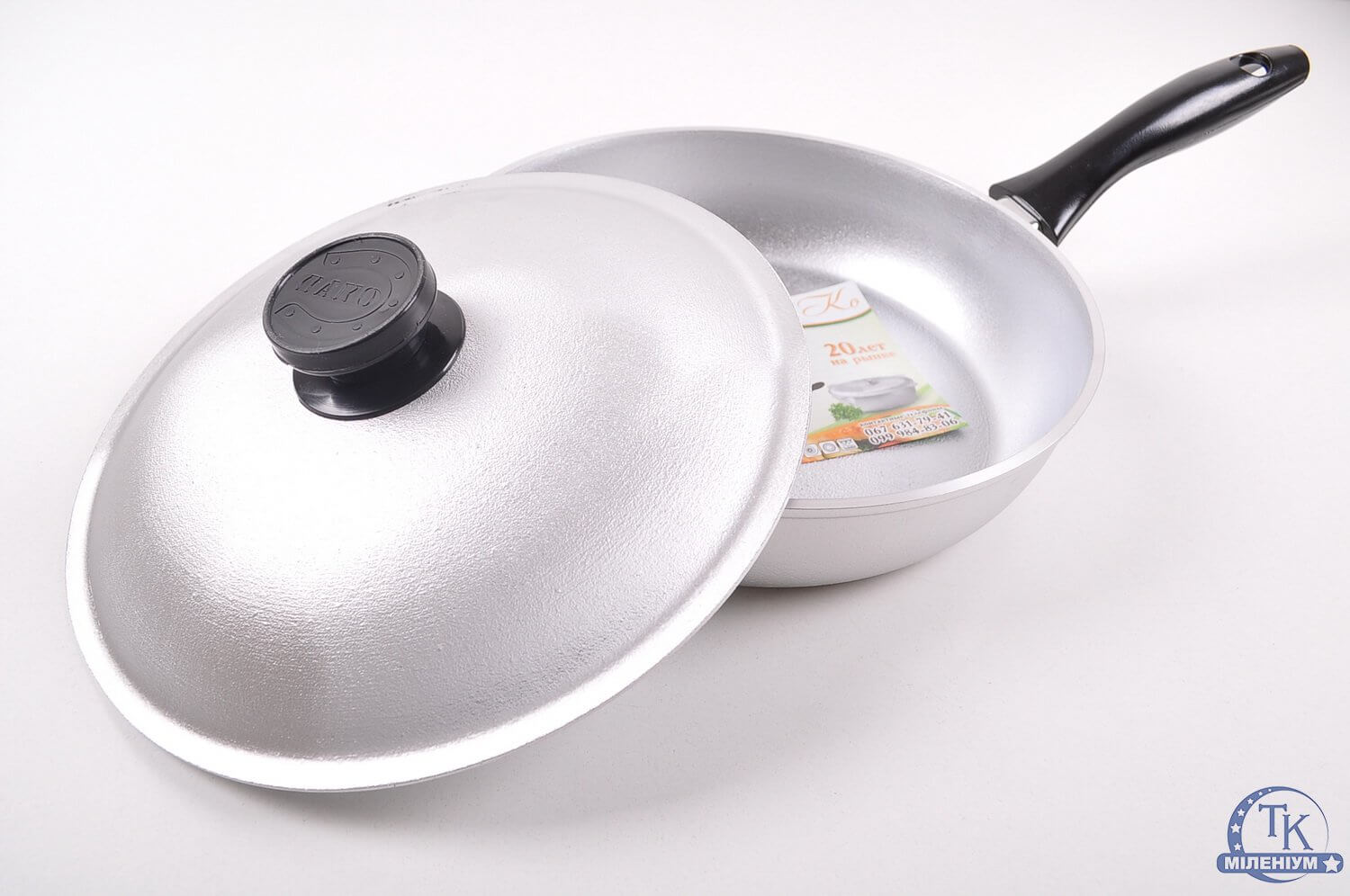
Other carbon removal options
There are a number of other methods that can be used to clean an aluminum frying pan from carbon deposits at home, namely:
- Soda. But not dry, but a paste; you can make it by adding water to soda. Such a detergent is generously applied to areas with carbon deposits and rubbed into them intensively, thereby removing pockets of carbon deposits.
- Apple. After cutting an ordinary apple into halves, they should be used to rub the areas with soot. This way you can clean the pan from recent soot.
- Onion. Peeled onions should be boiled in a frying pan; the vegetable must be peeled, otherwise it will stain the dishes.
- Dentifrice. Before coating aluminum utensils with this product, boil them in water for 10 minutes, then scatter tooth powder evenly over the surface and leave overnight.
Carbon deposits are easily removed with a soft sponge.
How to clean old grease
Besides the fact that it is not aesthetically pleasing, in a frying pan with old fat It’s also dangerous to cook, because you can get poisoned by such food. You can clean such stains at home using laundry soap. Cleaning sequence:
- grate the soap;
- sprinkle it on the pan;
- pour in hot water and let it stand.
- If the contamination is old, it is better to boil it in a basin.
While boiling with soap, the pan should be immersed in water.
Another solution in the fight against old fat from an aluminum frying pan is ammonia. Soak a soft cloth with it and wipe the dishes. By mixing ammonia with hot water, you can wash it after soaking it for a couple of hours.
Important! This cleaning should only be done in a well-ventilated area, or even better, outside.
Removing burnt food from the pan
An aluminum frying pan needs to be cleaned every now and then to remove burnt food, because it does not have a non-stick layer. In this case, you can clean aluminum dishes at home by boiling them in water with citric acid. Two teaspoons are enough to soften food residues, which after this treatment can be easily removed from the pan. Instead of citric acid It is acceptable to use vinegar or lemon juice.
If it’s summer outside and there is an opportunity to pick sorrel, then it will also help clean the frying pan; you need to place it in it and fill it with water. Let the “dish” boil; the remaining food will come off easily.
How to treat dishes after cleaning
After an aluminum frying pan is as good as new, it needs to be helped to regain its lost characteristics. Intensive cleaning of carbon deposits also removed the layer that prevented food from burning so intensely. To do this you need:
- into the frying pan even layer Pour salt, a couple of millimeters thick. The salt must be coarse;
- pour salt with sunflower oil;
- heat on the stove until the smell of hot oil and white smoke forms;
- remove from heat, cool;
- then remove the salt and oil, wash with warm water and soap, and dry.
The aluminum frying pan is ready for use again!
To extend the life of cookware, it is useful to know about its properties, proper preparation for use and maintenance. Aluminum or duralumin frying pans require special treatment. Let's figure out together how to properly prepare them for use and care for them so that they do not lose their qualities.
Features of aluminum and duralumin frying pans
Many modern frying pans are made of aluminum or duralumin. Dural is an alloy of aluminum with copper, magnesium, iron and silicon. After quenching in water, it becomes hard and stronger than pure aluminum.
Pans are made in two ways: stamping and casting. Stamped products are made from metal sheet. Their bottom is thin and often deforms during use. The thinner the walls of the frying pan, the cheaper it costs, but the less it will last.
Lightweight pancake pan with thin walls
To make a cast frying pan, molten aluminum is poured into a special mold. The result is a cookware with a thick bottom and walls, which increases its strength. Such products are massive.
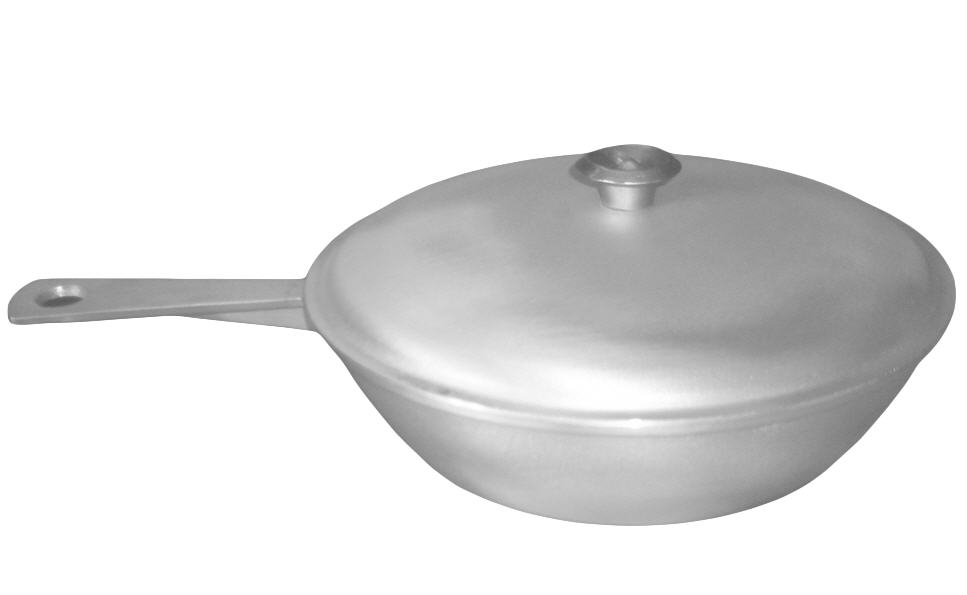
Thick bottom and walls add heaviness to the cast pan, but extend its service life
Aluminum and duralumin frying pans have undeniable advantages. They are lightweight, do not rust, and heat up quickly. At the same time, caring for these kitchen utensils requires knowledge of certain rules.
About harm and benefit
Aluminum is a soft metal, so you need to be smart about choosing cleaning products. Abrasive powders, metal sponges and brushes scratch the surface and this negatively affects the appearance and quality of the prepared dish (food sticks during cooking). In addition, the oxide film on the surface, which serves as a barrier to corrosion, will be damaged. A hard brush and metal sponge damage the film when cleaning. But it will easily be restored if you just pour it into the dishes cold water and leave for 15 minutes.
Using aluminum cookware is not harmful to health. Even if you cook only in aluminum cookware and use aluminum utensils and plates for many years, your body will not be at risk.
Aluminum has the ability to oxidize. It is not recommended to cook sour dishes in such dishes. It is better to immediately transfer the cooked food to a glass or enamel container.
How to prepare a frying pan for use
Wash the new frying pan with warm water and laundry soap or liquid dishwashing detergent. This will remove any remaining technical dirt and dust.

A new frying pan must be prepared before use.
A frying pan without a non-stick coating is prepared for use using salt or vegetable oil. There are several ways.
Method with water, without salt:
- Boil water in a frying pan.
- Drain and let the dishes dry.
- Wipe the product with vegetable oil and leave for 2-3 days.
Method with salt, without water:
- Add salt to cover the bottom.
- Heat for 10 minutes over low heat, let cool.
- Pour in salt, wipe with vegetable oil, and leave for 2-3 days.
Oven method:
- Lubricate with vegetable oil outside and inside.
- Place in the oven, heated to 120–150 0 C for 1 hour.
- Turn off the oven, leaving the pan in it for another 2-3 hours.
Method of heating oil with salt.
- Pour in vegetable oil to cover the bottom.
- Add 1 teaspoon of salt and stir.
- Heat over low heat until a characteristic smell appears.
- Let cool.
- After processing, rinse the pan again with water without detergents.
The resulting thin oil film will serve as a non-stick coating.
Video: how to prepare an aluminum frying pan for use
Methods and means for removing carbon deposits
When using a frying pan, droplets of fat gradually settle on the walls and bottom. If you do not wash the pan in time, the layer of soot will grow, worsening appearance products and their quality properties.
How to remove fresh stains
Small deposits can be softened by boiling, cleaned with a soft abrasive powder, ammonia or peroxide.
Boiling against fresh soot

Boiling against black spots
- Prepare the solution: pour 3-4 tbsp into 1 glass of water. spoons of vinegar.
- Boil the solution in a frying pan for 10–15 minutes.
- Rub the black spots with a sponge, rinse the pan and wipe dry.
Baking soda and peroxide will help in the fight against carbon deposits

Remove small stains with a cloth dampened ammonia. This will bring back the shine to the pan. Glass and porcelain cleaner is suitable for removing stains. Chalk or a mixture of chalk and clay is used as a soft abrasive.
How to deal with old carbon deposits
If the frying pan has been used for many years without proper care, then clean off the accumulated carbon deposits using more radical methods.
Remove carbon deposits with citric acid and vinegar
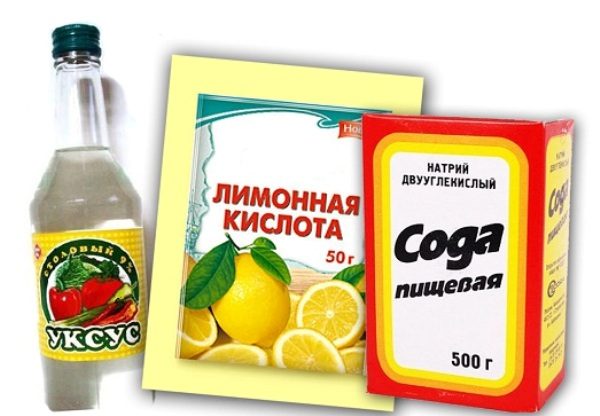
Use laundry soap and glue to remove old dirt

Burn off the carbon deposits in a thick frying pan with fire.
- Place the pan on medium heat, turn on the hood or provide ventilation to the room.
- Heat the pan for 1-2 hours.
- When burned, the pan will smoke, turn black, then the soot will turn into ash and crumble.
- Let the product cool.
- Clean and wash the pan.
When burning a frying pan with salt poured into it, less fumes are released, since the salt absorbs the burning fat.
Cleaning off carbon deposits with a grinder
A drill or grinder with an attachment in the form of a wire brush for metal will quickly restore the beauty of the outside of the frying pan.
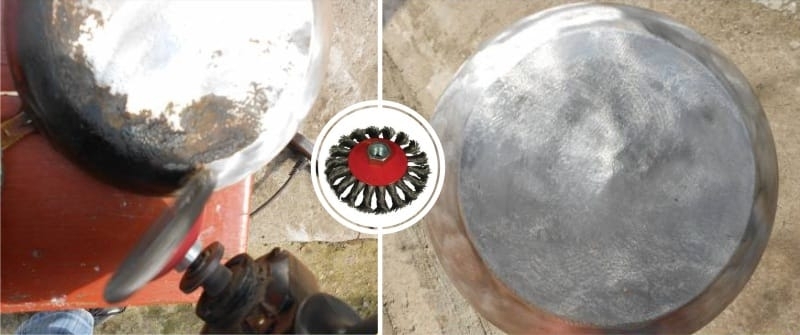
The mechanical method of cleaning a frying pan is quick and effective.
While cleaning dishes from carbon deposits mechanically, take precautions: wear safety glasses, thick clothing, gloves, a respirator.
Video: how to clean aluminum cookware with an angle grinder
Chemicals for old dirt
To remove fat and carbon deposits, you can use Bagi Shumanit, Amway oven cleaner, Pemolux gel, Comet-gel, Cif Cream and other products in the form of a cream or gel marked “Anti-grease”. They are suitable for almost all surfaces.

Shumanit gel will help quickly remove carbon deposits, but it cannot be used on the inner surface of the frying pan.
Use them only with gloves in a well-ventilated area. If your cookware has a non-stick coating, try the product on a small area of the cookware; some coatings may deteriorate. Products containing abrasive particles should not be used on aluminum cookware, non-stick coating or stainless steel. Use chemicals as directed to clean the outside of the pan.
To restore non-stick properties after cleaning old dirt, be sure to heat the pan and lubricate it with vegetable oil.
Owners of aluminum and duralumin frying pans know that a metal brush will damage the oxide film intended to protect the surface. To restore it, just pour water into the container and leave for 10 minutes. Aluminum products darken if chemicals are used when washing. Therefore, do not forget to season the frying pan, periodically renewing its natural non-stick layer, and also immediately soak and wash burnt food to avoid harsh cleaning or many hours of boiling.
Do not rush to throw away burnt dishes, even if stains have formed on them that cannot be washed off with regular cleaning. detergent. I'll tell you how to clean a burnt aluminum pan.
Getting rid of burnt stains with home remedies
If you want to learn how to clean a burnt pan without using harsh detergents and hard sponges, use proven home recipes. The price of all the options that I describe below is low, since all the ingredients are either available at home or cost pennies.
TOP 5 recipes for internal cleaning
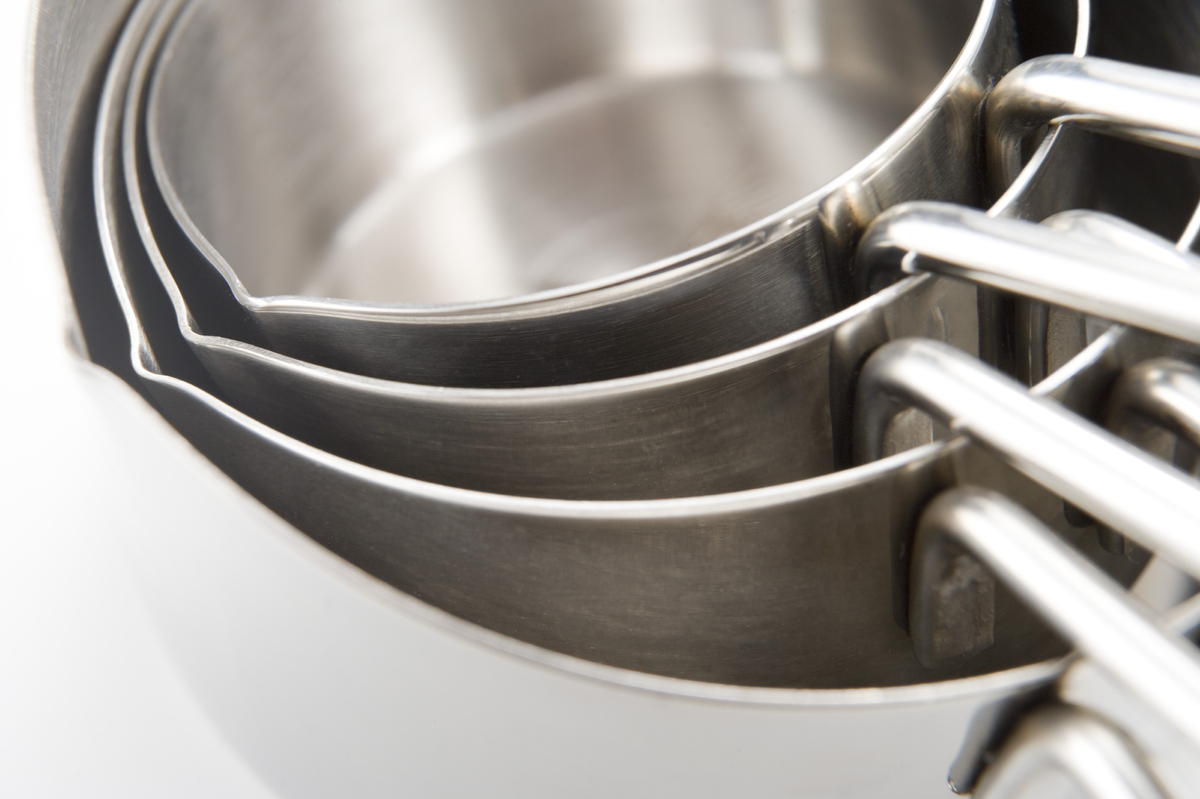
Did you forget to remove the dishes from the stove in time and they got badly burnt? You can deal with carbon deposits with your own hands in just 1–2 hours.
I have included in the table the best homemade recipes for cleaning the bottom and inner walls of a burnt container:
| Photo | Instructions |
 | Recipe 1. Boiling with soda This method is the simplest. To clean, follow these steps:
|
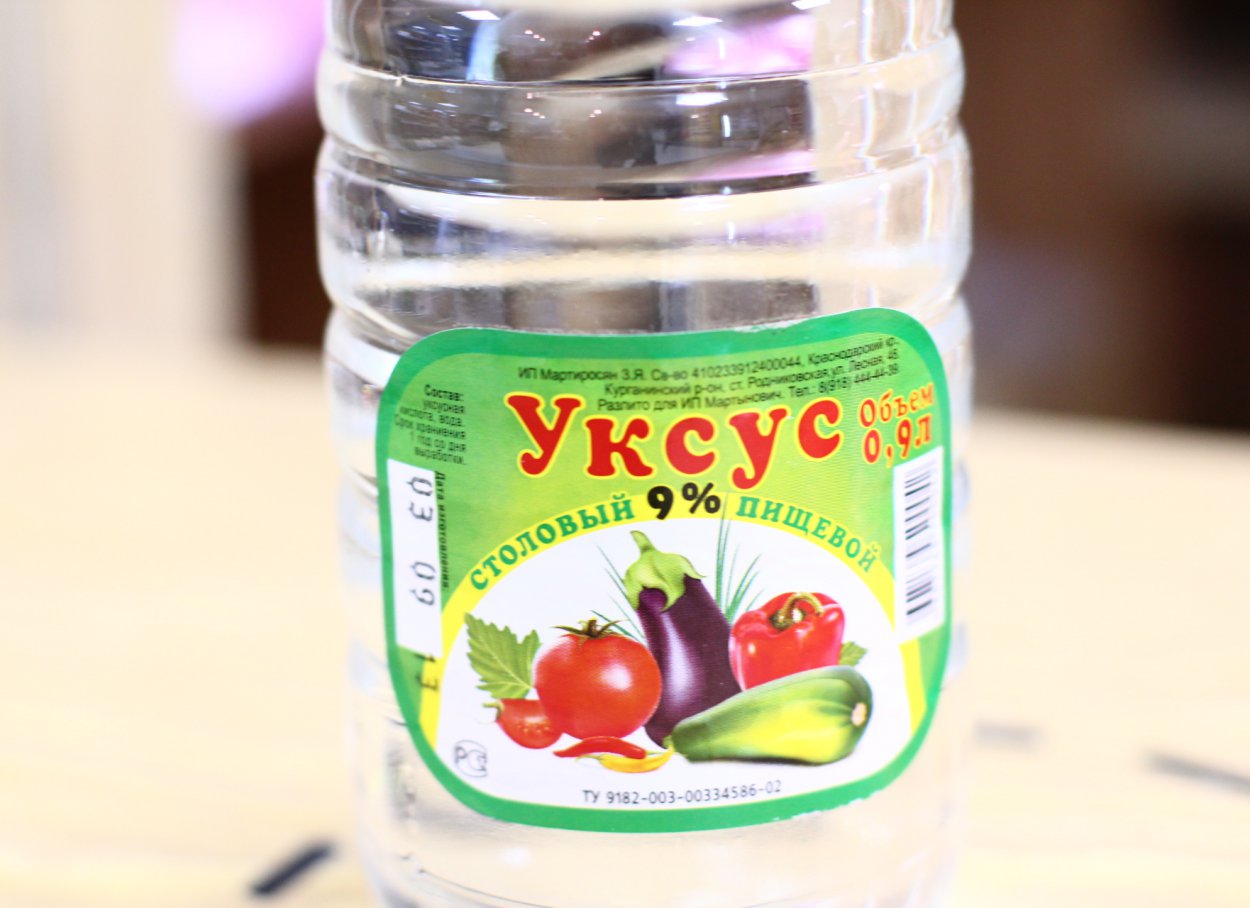 | Recipe 2. Vinegar Regular 9% vinegar will help get rid of dirt after a pan has burned. To clean you need:
|
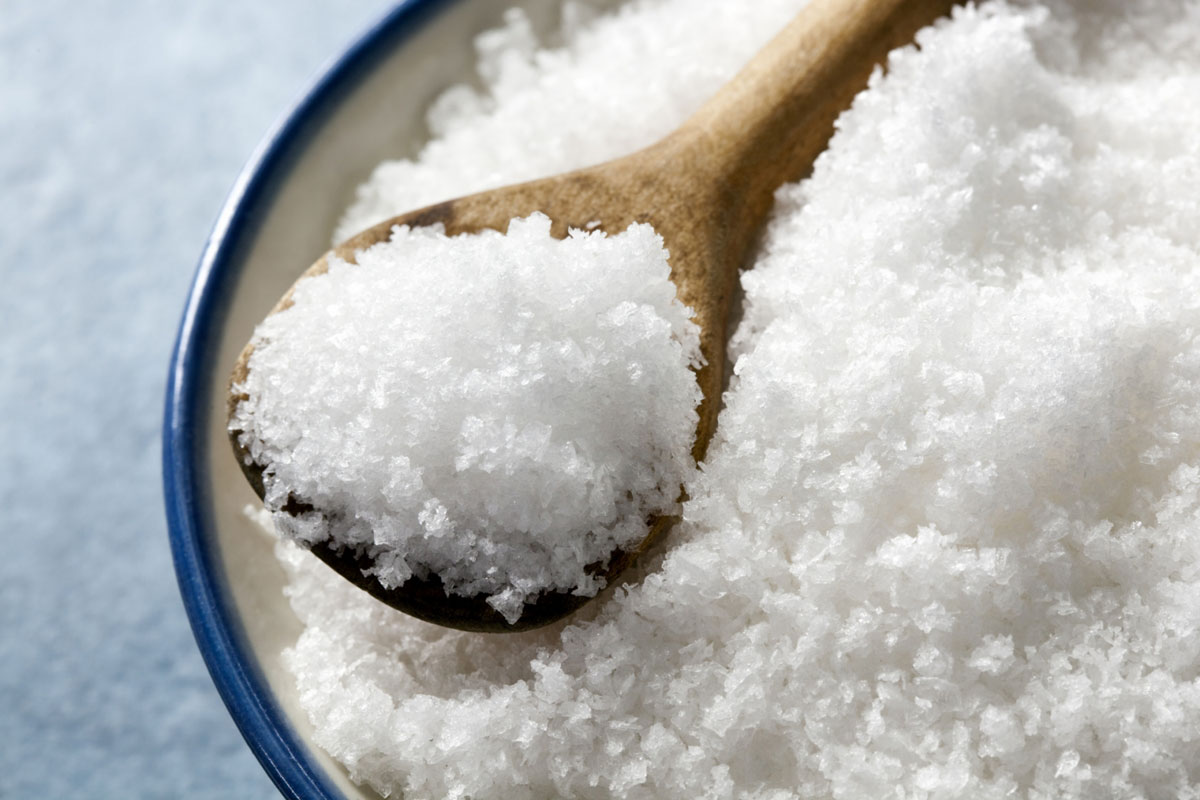 | Recipe 3. Salt This method is suitable for products made of aluminum and enamel cookware. But you need to work carefully with a stainless steel product; in some cases, salt mixed with cold water can leave of stainless steel spots. How to Clean Stains:
|
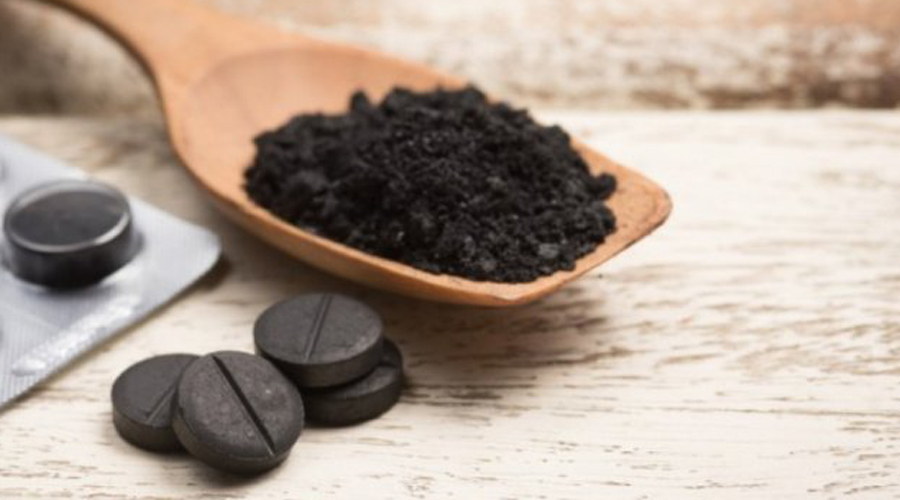 | Recipe 4. Activated carbon If the pan has recently burned, you can clean the stains using regular activated carbon. For this:
|
 | Recipe 5. Soda-salt solution If you are looking for what to do if the product is badly burnt or the stains are ingrained, then use this simple recipe:
|
Recipes for cleaning stains on the outside of a container
How to clean a burnt aluminum pan not only from the inside?
Recipe. To remove stains from outside, find a metal basin or vessel bigger size than the affected capacity. It is important that all stains can be completely covered with water.
Pour water into a larger container and add baking soda to it at the rate of about 100 grams per liter of water. Turn on low heat. After boiling, you need to “boil” the affected pan for about 1–1.5 hours.
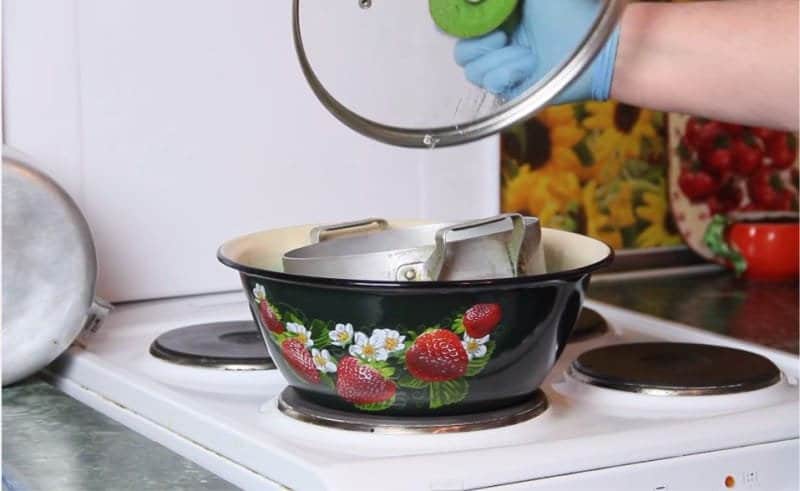
If the pan is not very burnt, you can use a soap solution instead of soda. You just need to pour grated laundry soap into a larger container.
What not to do: 3 taboos

In order for aluminum cookware to serve you for a long time even after it has burned, you need to remember simple tips:
- “No” to caustic detergent emulsions. Aggressive products will react with aluminum and may leave marks on the dishes that can no longer be removed.
- Gel and liquid detergents are better than powders. Even if you use a non-abrasive cleaning powder, it can still damage aluminum surfaces, so it's best to opt for soft gels or homemade cleaning recipes.
- Only soft sponges. Do not use metal sponges or large abrasive particles for cleaning.

conclusions
I told you how to clean a pan from carbon deposits inside and outside. If you try any of the recipes, share your impressions in the comments. And more healthy recipes collected in the video in this article.
All women spend a lot of time with kitchen stove. And every housewife wants to cook with pleasure. Cooking utensils play an important role in this. The main tools here are frying pans and pots. The quality of food depends on their type, size and, most importantly, the material from which they are made. Very often women use aluminum cookware. Its advantages are that it is light, comfortable and inexpensive. But often carbon deposits appear on it due to the thinness of the material. This spoils the taste of dishes and the appearance of kitchen utensils.
HOW TO CLEAN AN ALUMINUM PAN
The fact is that aluminum is a very delicate metal. It must be used very carefully, using only plastic or wooden spatulas. And approach cleaning with extreme caution. Under no circumstances should you use abrasives or steel wool. Then how to clean an aluminum frying pan?
There are several options:
1.Mix dishwashing detergent, vinegar and baking soda in equal parts. Pour water into the frying pan (as much as possible), add the resulting mixture there and put on fire. Boil for about 15-20 minutes, then remove the carbon deposits with a sponge.
2. The principle is the same as in the first option, but instead of the previous ingredients, add only 2-3 tablespoons of citric acid to the water.
3.You can use ammonia when washing the frying pan.
4. Boiling in the mixture: for 10-15 liters of water - 100 g of silicate glue, 100-200 g of soda ash. Before cooking an aluminum frying pan with soda, you need to remove all plastic components from it (for example, a handle) and choose a large container that will completely fit the frying pan and that you won’t mind damaging. Boil the pan in this solution for 30-40 minutes. Next, wash it as usual. Instead of glue and soda, you can try 100 g of finely chopped laundry soap. This way you can clean not only the internal, but also the external surface.
HOW TO CLEAN A NON-STICK PAN
Nowadays, there is a large assortment of frying pans with anti-stick coating: Teflon, titanium, marble, ceramics. This type of cookware simply should not burn. Therefore, it is easy to clean with detergent. Just do not use abrasive, alkaline or acidic products, as well as hard sponges and brushes. For stubborn dirt, you can soak it briefly in warm water or boil water with detergent in a frying pan.
But it happens that on Teflon or on ceramic frying pan food burns and carbon deposits appear. This may indicate that the coating is of poor quality or is damaged. In any case, such utensils can no longer be used. This is very harmful to health.
Non-stick coating is usually applied to inner surface dishes, so carbon deposits may appear on the outside. How to wash non-stick frying pan from the outside? You can boil a frying pan in water with baking soda. Or use the method already familiar to us with silicate glue, as well as laundry soap. These ingredients will not damage the coating. If the carbon deposits are very old, you will have to resort to chemicals, which can be purchased at any store household chemicals. But here you need to be extremely careful so that such detergents do not get on the inner surface of the dishes.

In order for kitchen utensils to last a long time, and for cooking not to harm the body, you need to use them carefully, wash them properly and try to purchase only quality dishes. Sometimes people use the baking method before using their frying pans for the first time, and many have no idea how to season an aluminum frying pan.
HOW TO SCALE AN ALUMINUM PAN
The new frying pan must be washed and dried well. Then pour it in sunflower oil so that the bottom is completely covered, and add 1 tbsp. l. salt. Next, place the frying pan on the stove and heat until it smells like hot oil.
There is another option for calcining an aluminum frying pan. Lightly rub the pre-washed and dried frying pan with refined vegetable oil from the inside and outer sides, turn upside down and place in a preheated oven. After 60 minutes, turn off the oven and do not remove the pan until it cools down.

During the calcination process, a protective film, which should prevent burning and soot formation. After carrying out such procedures, it is advisable not to use the frying pan for several days to consolidate the result.
You can also use salt to heat an aluminum frying pan. Place a centimeter layer on the bottom, then leave on the fire for 15-20 minutes. Calcination of a ceramic frying pan can also be carried out over a fire with the addition of only vegetable oil. This will extend its life and strengthen its non-stick properties.
In the kitchen, not only aluminum frying pans, but also pots are very often used. Therefore, housewives are also interested in how to clean aluminum pans. The answer is simple. All the manipulations we suggested for cleaning pans are also suitable for aluminum pans.
